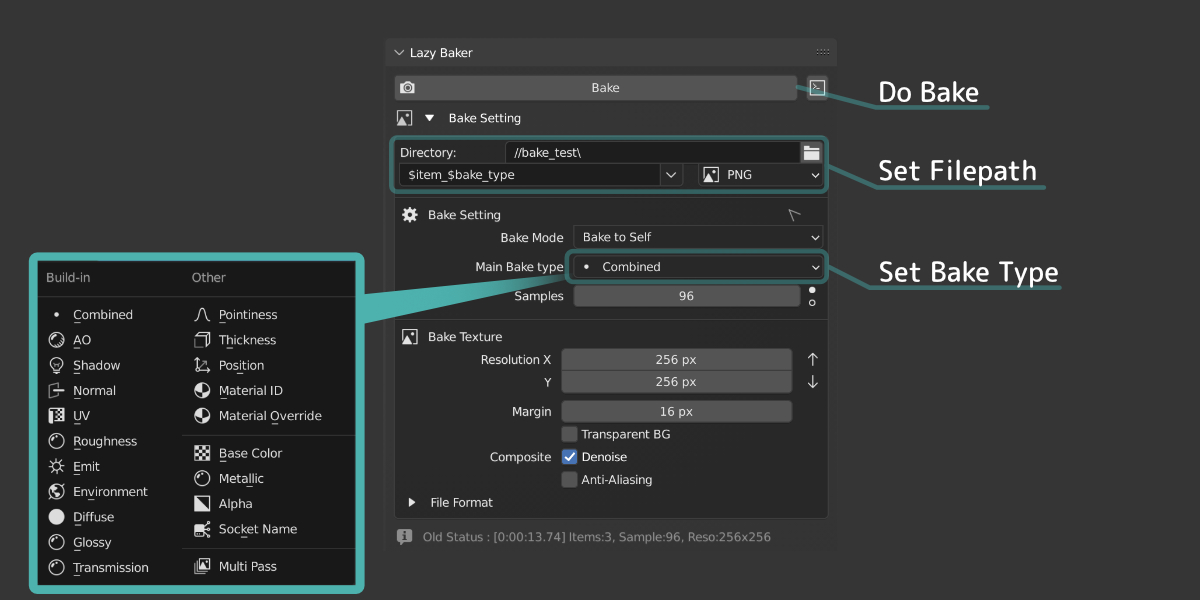Lazy Baker
Manage the list of data to be baked and bake all at once with various bake types
It implements fine-grained baking options such as denoising and anti-aliasing, as well as auxiliary functions such as creating objects for baked image preview.
Efficient baking is performed by dividing collections into groups to be baked and managing the collections in the list menu.
You can set the bake type for each list item, bake them individually, and set up materials.
You can also batch bake all of this list items.
List Management
-
Set the save destination file path
- Set the file path of the location you want to save.
-
Set the bake type
- Select the type of path you want.
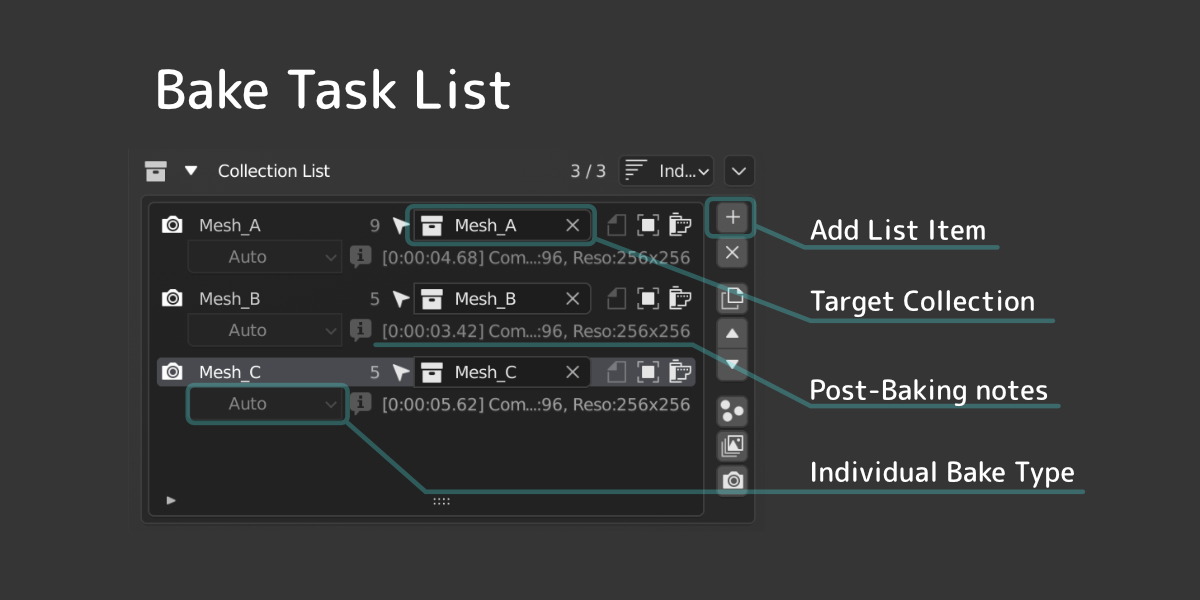
-
Add the collection you want to bake to the list
- The collection in the list is baked.
- If there is no list, bake the currently selected object.
-
Execute [Bake]
- For long bake, Blender will be inoperable until the bake is complete.
- Be sure to display the console window before executing because the log can be grasped in the console window.
Once you have a baked image, you can easily check the baked image from [Create Preview Object for Joining].
In addition, the time taken for baking and various statuses are displayed.
It can be used as an index when baking again.
Bake mode
There are two types : [ Bake to Self ] and [ High to Low].
-
Bake to self
based on the information of the object itself. - High to Low
- Transfers data in a collection to another low-poly collection.
Find the other collection that matches [collection name + special name(_low)], set it as the collection to be baked, and bake it.
Bake type
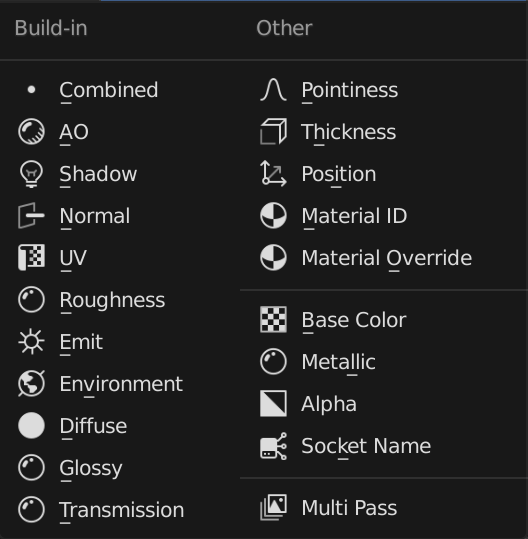
In addition to the bake type built into Blender, you can select convex parts, positions, and multiple paths.
If the item's bake type setting is automatic , it will be the same as the main bake type setting.
Convex part (Pointiness)
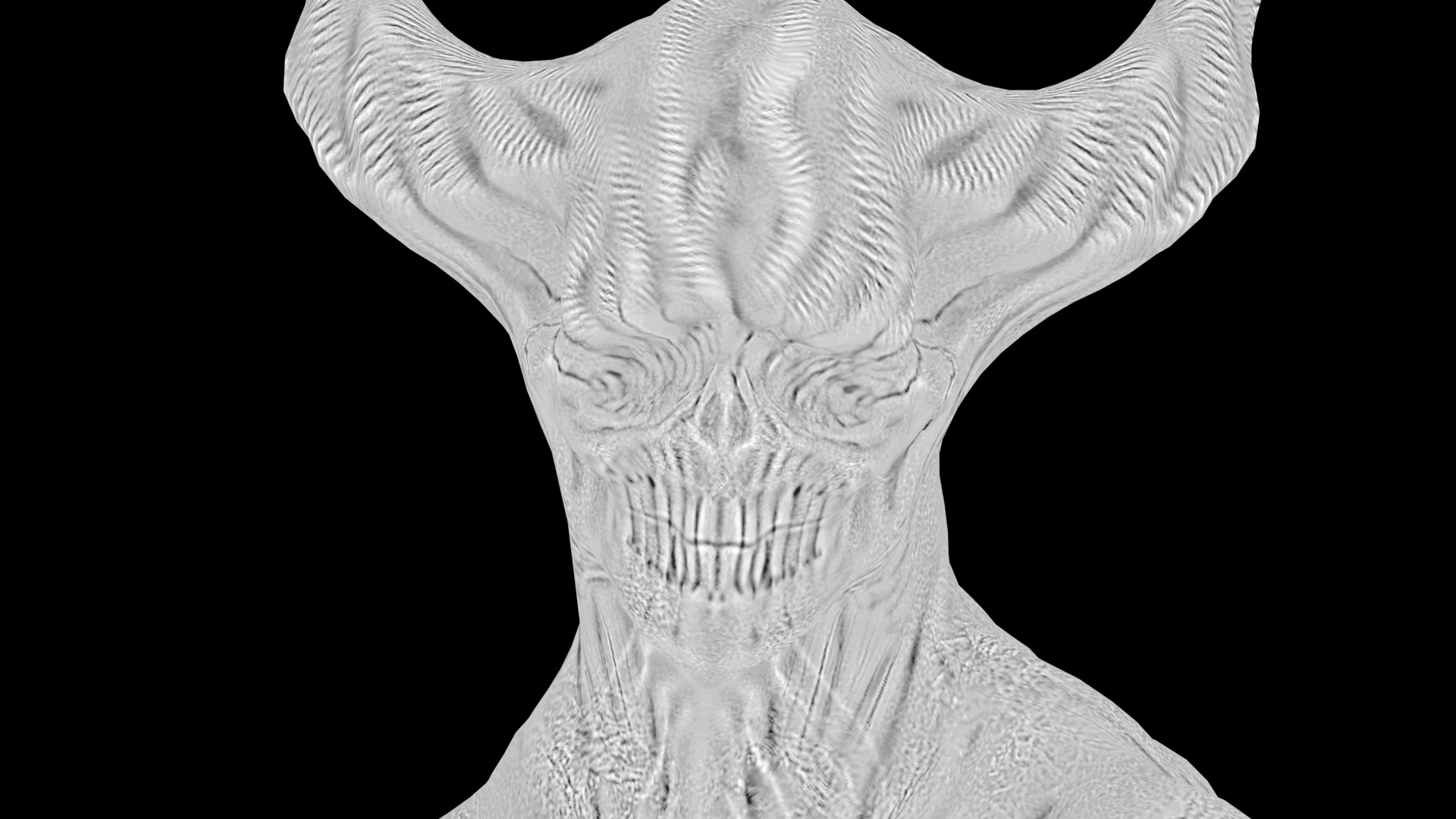
The convex part uses the convex part of the geometry node. This is useful as a path that emphasizes details such as sculpt models.

There is an option to use a color lamp to increase the contrast.
Thickness
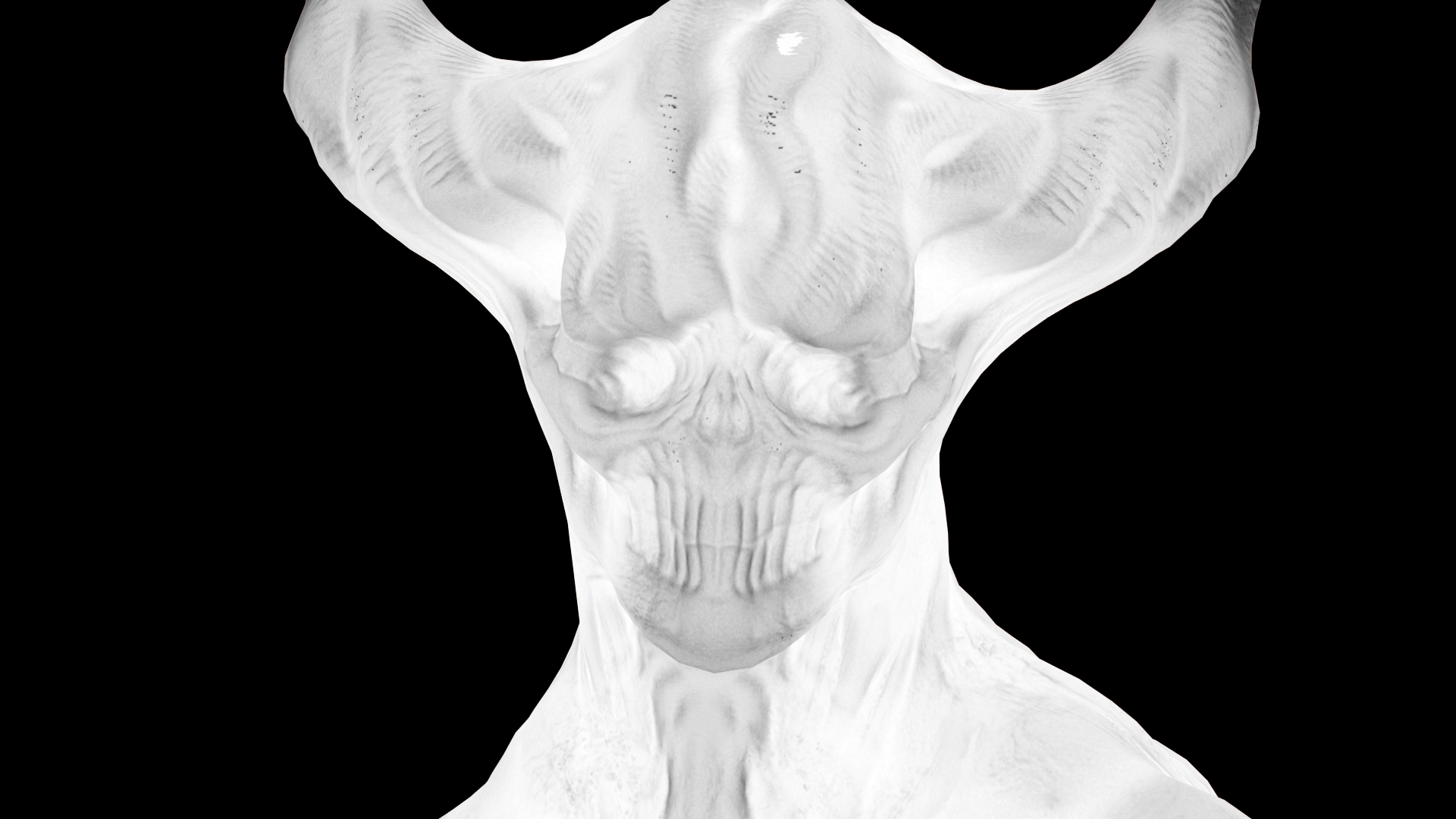
For width, use the AO node's Inner option to bake the thinner part of the mesh.
For example, it's useful for getting a map where you want to add redness to a person's ears or nose.

- Inside
-
Local only
- Because this add-on is a specification that combines and renders all the objects in the collection, the objects in the collection will affect each other.
- number of samples
-
distance
- The smaller the distance, the narrower the range.
Material ID
Bake a random color based on the material name.
This is convenient when you want to make a mask for each material.
Material override
Replaces the material of the target mesh with the specified material before baking.
User-created materials can be used for baking, and any path created by the shader node can be used.
Bake types are baked with the bake type option for material overrides. (Only Blender's built-in bake type can be specified).
Base color metallic alpha socket name
You can bake the base color and metallic alpha connected to the Principle BSDF node.
The Socket Name option allows you to select and export only your favorite sockets from various sockets such as the Principle BSDF.
If you have problems with the diffuse bake type, you may get the correct result with the base color (because the diffuse will affect the metallic etc. and the result will change).
Detail
Bake the node or its value connected to the'socket name'of the shader node that is directly connected to the output node.
Materials connected to shaders that do not have a'socket name'are ignored.






